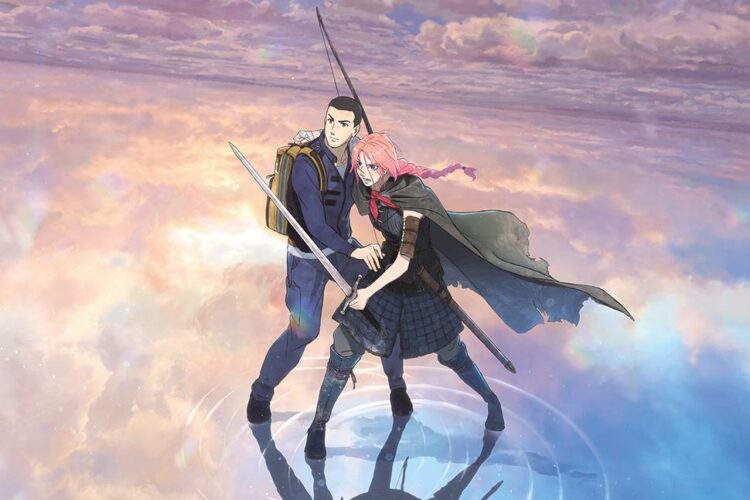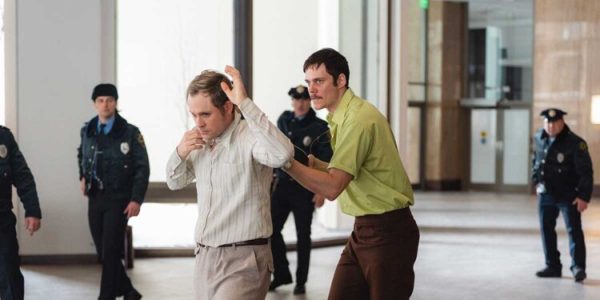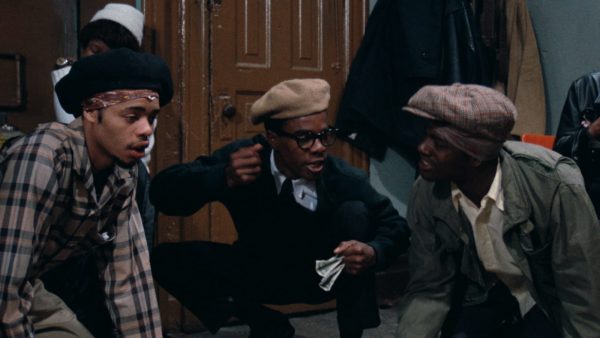
Across two decades of crafting animated features, director Mamoru Hosoda has made both intimate dramas like Wolf Children and high-concept films like the science-fiction spectacle Summer Wars. In 2019, his family fantasy Mirai was nominated for an Academy Award, becoming the first anime feature not produced by Studio Ghibli to achieve such distinction. But instead of following it with another intimate original story, Hosoda opted to make Belle, a sci-fi fantasy take on Beauty and the Beast partially set in a vibrant, imaginative virtual world. Belle is a pale, pink-haired heroine who finds love and herself online.
Scarlet is another story of a pale, pink-haired heroine, but something is different: this time she ventures not into a digital world, but the afterlife, populated by people from various worlds, times, and backgrounds. Yet what surrounds them is nowhere near as compelling. The afterlife in Scarlet is a vast wasteland of jagged landscape, infinite deserts. There is very little life in this afterlife. Scarlet’s surroundings appear more digital than the world of Belle. There’s a smooth, ornate quality to every setting in Hosoda’s latest, as if everything we see is simply a backdrop to our heroine’s quest. The world she came from isn’t much better––the castle Scarlet grew up in has the uncanny quality of a video game setting. Scarlet moves through her surroundings swallowed by each massive setting she encounters. Opting for very few close-ups, Hosoda mistakes a large scope for compelling images and achieved something fans never thought possible: he’s made a film that looks generic.
It doesn’t help that it’s a story we’ve heard many times before. Scarlet is an expansive, genre-bending reimagining of William Shakespeare’s Hamlet. Here, Prince Hamlet is Scarlet, a young princess who takes after her kind father, King Amulet. But her vindictive, wicked mother Gertrude betrays the king in favor of his evil brother Claudius. They murder Scarlet’s father, quickly marry, and plunge the kingdom into famine and despair. Scarlet trains as a warrior hell-bent on revenge, but Claudius plays dirty, having her poisoned before she can carry out her attack. Angry and stranded in the desolate afterlife, Scarlet meets Hijiri, a young male nurse from a different time who stays by her side as she fights to carry out her revenge on her uncle, even after death.
Scarlet and Hijiri form an interesting pair––she a warrior, he a dedicated healer––as they journey in search of a staircase that will take them to the next world. Even in death, Claudius hoards power, trying to prevent the masses from salvation he believes belongs to him and his not-yet-dead queen. But there are other, more powerful forces at work here. Despite Hamlet‘s reputation as a tragedy, Hosoda interprets it as a cautionary tale. The two concepts are similar, both involving the elements of despair. But whereas Hamlet leaves us free to take what we want from it, Scarlet is a film against the dangers of seeking revenge. Hosoda accomplishes this by externalizing Hamlet’s inner turmoil into action. Scarlet doesn’t wait to contemplate, reacting to her father’s murder by throwing herself into training as a warrior. The lack of introspection lays bare the film’s themes. We are told and shown, over and over, that violence and revenge only lead to more suffering on all sides. Scarlet is paired with a gentle love interest who knows nothing of war and his naïveté is treated as a virtue.
What’s most confusing is the film assigning blame to Scarlet for continuing the cycle of violence, and as the narrative stretches towards its labored finale, she becomes increasingly apologetic about how her actions in her time informed the state of the future. Hosoda’s vision is a shockingly simplistic interpretation of a complicated, timeless, emotionally rich text. And though its anti-violence message is admirable, it seems misplaced here. The oppression facilitated by Claudius against both Scarlet and their shared subjects is a very real kind of tyranny, and there are no magical shortcuts to get around fighting for one’s own freedom and dignity. Scarlet didn’t just want revenge––she wanted to defend her people from persecution. Her journey is less compelling when she didn’t have very far to go. Scarlet’s heart was in the right place the whole time.
Scarlet screened at the 63rd New York Film Festival and will open in theaters on February 6, following a December 12 qualifying run.
The post NYFF Review: Scarlet Finds Mamoru Hosoda Simplistically Adapting a Timeless Tale first appeared on The Film Stage.









